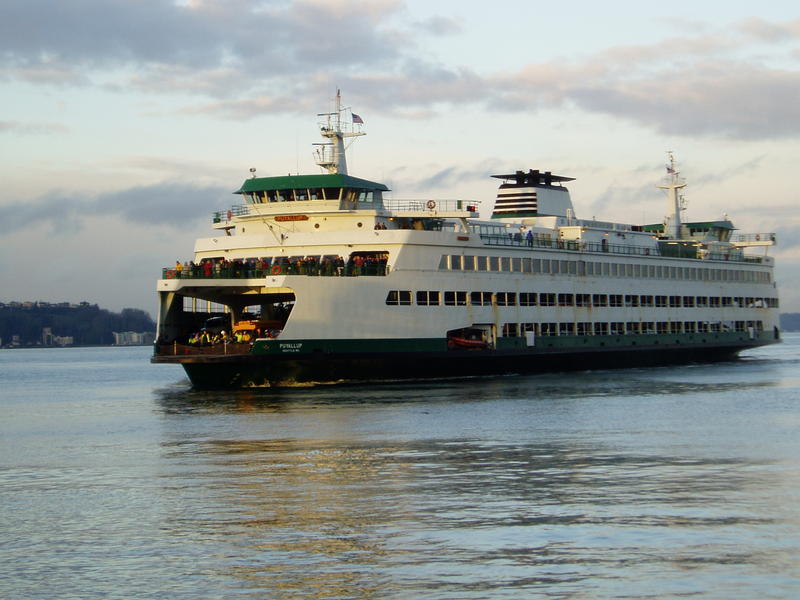
Washington State Ferries Unveils Plan For Younger, Greener (And A Bit Larger) Fleet By 2040
Listen
Washington State Ferries has come up with a plan to replace more than half of its fleet with new, electric-powered ferries. But the new plan faces hurdles from a cost standpoint and limited shipyard capacity.
The nation’s largest ferry system would become younger and greener, but not much bigger under a strategic plan just delivered to the Washington Legislature. The blueprint for the next two decades envisions buying 16 new ferries to update the aging fleet and to have more vessels in reserve.
“With an overall fleet size of 23 vessels in 2019, and more vessels scheduled for retirement each subsequent year, it is clear that without investment in vessel replacement, a growing risk to service reliability accumulates every year,” reads the WSF 2040 Long Range Plan. “Even with a one-for-one replacement as older vessels retire, the current fleet size does not include sufficient relief vessels to support a reliable system.”
Ferry system spokesperson Hadley Rodero said customers repeatedly voiced a desire for more reliability at outreach events during the drafting of the strategic plan.
“The biggest theme was build new ferries, build new ferries,” Rodero said in an interview Monday. “Do more to stabilize the system and make sure it has reliable service.”
Providing system capacity enhancements and environmentally-friendly vessels were among other top priorities to emerge.
The WSF road map envisions ending up with a fleet of 26 vessels by the year 2040, three more than the current fleet. All of the new ferries would have electric-hybrid propulsion as opposed to the diesel power now standard in the fleet.
Rodero says foreseeable hurdles include the need to modify terminals so new battery-powered ferries can plug in to recharge. Also, there are only one or two shipyards in Washington capable of building these boats, according to the planning document.
The legislature has long required new ferries to be built in-state. The “Build Them in Washington” policy is designed to keep the economic benefits of construction local, although budget hawks in the statehouse have criticized the policy for limiting competition and significantly inflating the price borne by taxpayers.
But the biggest obstacle to realizing the ferry system’s long range plan may just be that its cost far exceeds the dollars available from current revenue streams.
“We’re going to have to make some breakthroughs,” said state Rep. Gael Tarleton, a Democratic legislator the ferry system consulted during the long range plan development. “If you only build what you think you can afford today, you will never build to the capacity you will need 20 years from now.”
Were state legislators to adopt the ferry system’s construction wish list wholesale, they would have to find more than $6 billion in new revenue by 2035.
“Gas taxes are not going to get it done,” Tarleton said in an interview Monday.
In the near term, the blueprint calls for building five new mid-size vessels “as soon as possible to stabilize the system” using a current, open contract with Vigor’s Harbor Island shipyard. Future vessels could be a mix of 144-car and 124-car ferries with plug-in hybrid propulsion, delivered on a schedule of one new boat per year.
Democratic Gov. Jay Inslee’s budget proposal to the 2019 Legislature includes requests for two new 144-car ferries and money to retrofit two existing ferries with batteries so they can cross Puget Sound on electric power nearly all of the time”That aligns with our plan,” Rodero said.
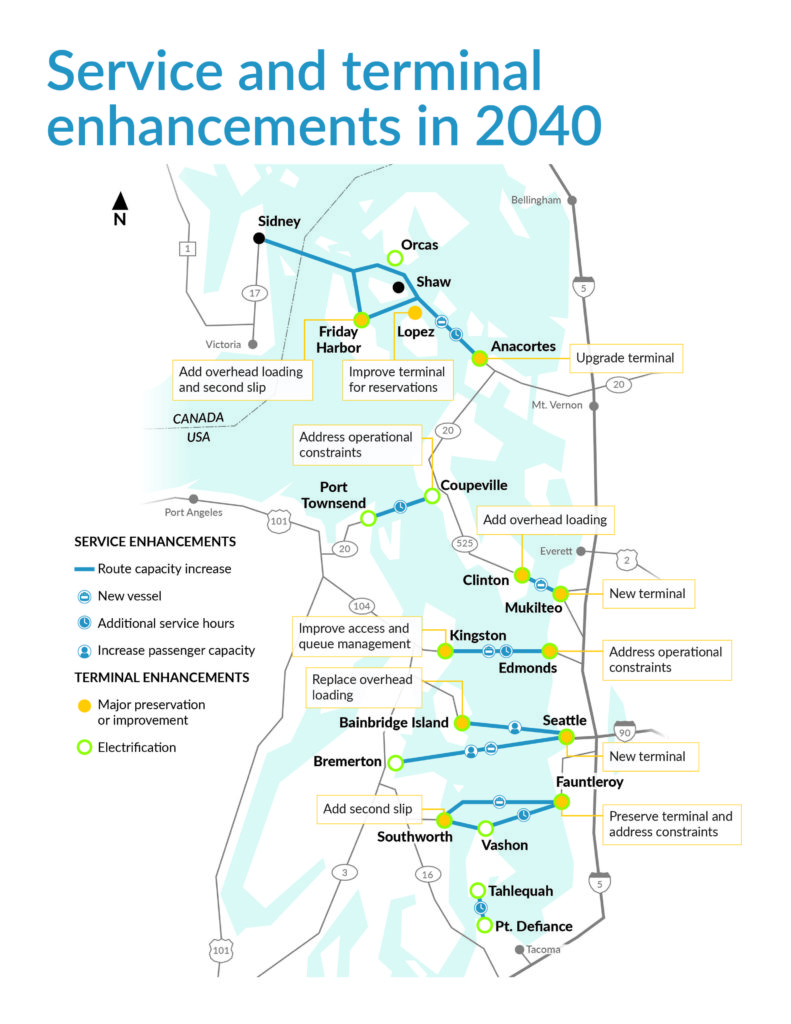
Washington State Ferries plans to enhance several of its routes by 2040. CREDIT: WSDOT
Related Stories:
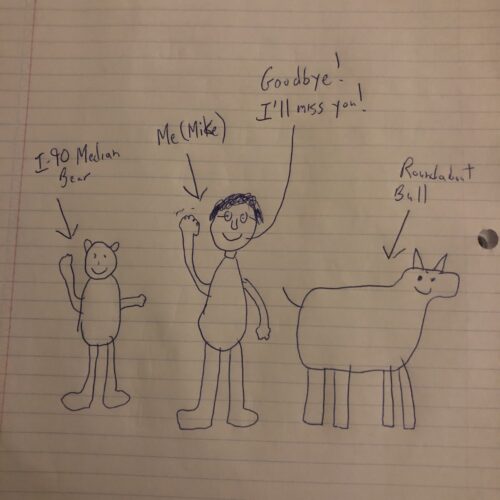
Mr. WSDOT — the man who’s helped make road alerts interesting and ‘artistic’ — is heading to a new job
When Mike Allende started managing social media for the Washington State Department of Transportation, he was told “don’t be boring.”
“Boring” is probably the last word any one would use to describe Allende’s approach to the job, which massively grew engagement while he worked there. Known by some fans as Mr. WSDOT, he’s the man behind the most followed state department of transportation Twitter, or X, account nationwide, with some 543,000 followers on the department’s traffic page.
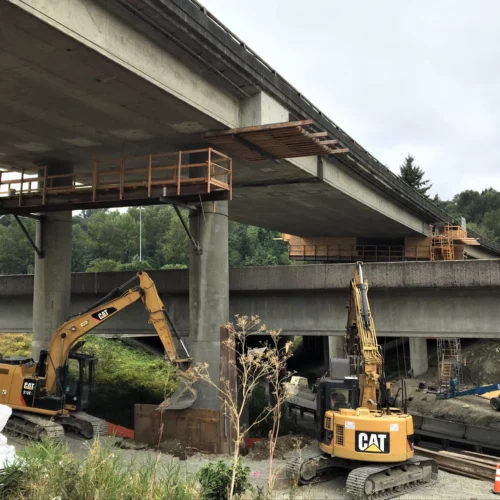
Some freeways may be useable following ‘the Big One’ per new modeling by UW
New modeling by the University of Washington of the impacts of a major Cascadia earthquake offers a less dire picture of the aftermath of the so-called “Big One” — specifically when it comes to highway bridges.
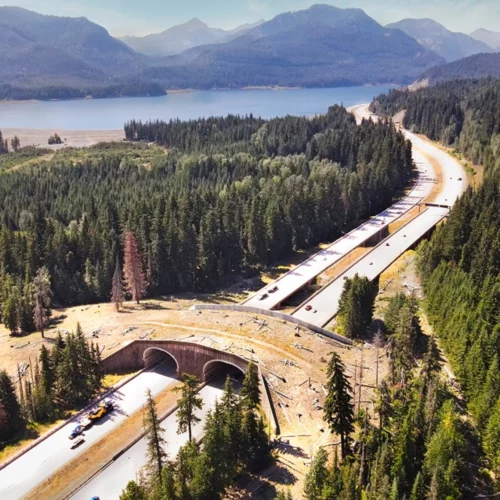
Animal Crossings Over And Under Highways Can Save Big Dollars — Not Just Lives — Says New Study
Collisions between vehicles and large animals, like deer, are not only scary. The medical, car repair and cleanup costs really add up. That is according to a new study out of Washington State University that supports the case for building more wildlife crossings on highways.















